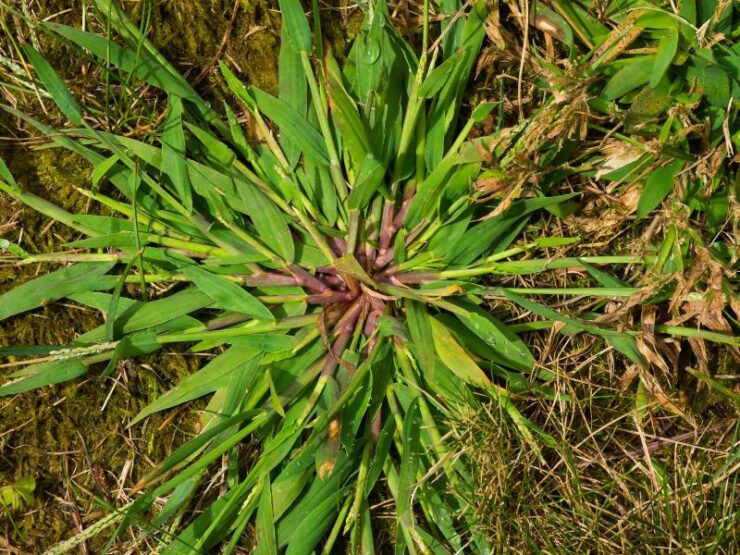Maintaining a lush, green lawn can be a challenging task, especially when persistent weeds like crabgrass invade your yard. Crabgrass, a fast-growing and invasive weed, can quickly dominate your lawn if left untreated. Its resilience and ability to spread make it one of the most frustrating problems for homeowners and gardeners. However, with the right strategies and techniques, you can effectively eliminate crabgrass and prevent it from coming back. This guide will cover everything you need to know about getting rid of crabgrass and maintaining a healthy lawn.
Understanding Crabgrass: What You’re Dealing With
Crabgrass is an annual weed that thrives in warm weather. It germinates in late spring, grows rapidly during summer, and dies off in the fall. Despite its short lifecycle, crabgrass produces thousands of seeds that can lie dormant in your soil for years, waiting for the perfect conditions to grow.
Crabgrass is easily recognizable by its low-growing, sprawling stems and finger-like seed heads. It thrives in compacted, nutrient-poor soil, making it a clear indicator of underlying lawn health issues. Understanding these traits is crucial to effectively combating this weed.
Step-by-Step Guide to Getting Rid of Crabgrass
1. Manual Removal
The most straightforward method to eliminate crabgrass is by pulling it out manually. This is most effective if done early in the weed’s lifecycle before it sets seeds.
- Tools Needed: Use a weeding tool or garden trowel for deeper roots.
- Technique: Grab the weed at the base, ensuring you remove the entire root system. Dispose of the pulled weeds in a sealed bag to prevent seed dispersal.
2. Mowing Techniques
Proper mowing practices can weaken crabgrass and prevent its spread.
- Mowing Height: Keep your grass height at 2.5 to 3 inches. Taller grass shades the soil, making it harder for crabgrass seeds to germinate.
- Mow Regularly: Avoid cutting more than one-third of the grass height at a time to keep your lawn healthy.
3. Use of Pre-Emergent Herbicides
Pre-emergent herbicides are a proactive solution, preventing crabgrass seeds from germinating in the first place.
- When to Apply: Early spring, before the soil reaches 55°F.
- Application Tips: Spread the herbicide evenly across your lawn and water it lightly to activate it.
4. Applying Post-Emergent Herbicides
If crabgrass is already growing, post-emergent herbicides can kill it without harming your grass.
- Choosing the Right Product: Look for selective herbicides designed to target crabgrass.
- Application: Apply on a dry, windless day for maximum effectiveness. Follow the manufacturer’s instructions carefully.
Preventing Crabgrass from Returning
1. Improve Soil Health
Healthy soil discourages crabgrass growth. Conduct a soil test to check pH and nutrient levels. Amend your soil with compost or fertilizer as needed to maintain a balanced environment.
2. Over seeding
Thick, dense lawns are less susceptible to weeds. Over seed your lawn in the fall to fill in bare spots and crowd out crabgrass.
3. Aerate Your Lawn
Compacted soil is an ideal environment for crabgrass. Aerate your lawn annually to improve drainage and encourage healthy root growth.
4. Mulching
Use organic mulch in garden beds and around trees to suppress weeds. Mulch also helps retain moisture and regulates soil temperature.
5. Regular Watering and Feeding
Water your lawn deeply but infrequently to encourage deep root growth. Feed your grass with a nitrogen-rich fertilizer in early spring and mid-summer to promote healthy growth.
Natural Alternatives to Get Rid of Crabgrass
For those who prefer chemical-free solutions, there are several natural methods to consider:
1. Vinegar Spray
Household vinegar can kill crabgrass when applied directly. Use a spray bottle and focus on the weed, avoiding contact with surrounding grass.
2. Corn Gluten Meal
Corn gluten meal acts as a natural pre-emergent herbicide. Apply it in early spring to inhibit crabgrass seed germination.
3. Boiling Water
Pouring boiling water directly onto crabgrass will kill it instantly. This method works best for isolated weeds and should be used with caution to avoid harming nearby plants.
Common Mistakes to Avoid
Even with the best intentions, some mistakes can make crabgrass control more difficult:
- Ignoring Early Growth: Waiting until crabgrass is fully grown makes it harder to remove.
- Overwatering: Too much water creates ideal conditions for crabgrass.
- Using Herbicides Incorrectly: Overuse or improper application of herbicides can harm your lawn and reduce effectiveness.
Seasonal Crabgrass Management
Spring
- Apply pre-emergent herbicide.
- Aerate and fertilize your lawn.
- Start over seeding if necessary.
Summer
- Mow your lawn regularly.
- Spot-treat crabgrass with post-emergent herbicides.
- Water deeply to maintain healthy grass.
Fall
- Remove remaining crabgrass manually.
- Over seed to prepare for the next growing season.
- Apply a slow-release fertilizer.
Winter
- Rake and clean your lawn to remove debris and prevent overwintering weeds.
- Plan your crabgrass control strategy for the upcoming spring.
The Long-Term Benefits of a Crabgrass-Free Lawn
Eliminating crabgrass not only enhances the aesthetic appeal of your lawn but also contributes to its overall health. A crabgrass-free lawn:
- Provides better erosion control.
- Supports biodiversity by creating a favorable environment for beneficial insects and microorganisms.
- Enhances property value by improving curb appeal.
Conclusion
Getting rid of crabgrass requires a combination of prevention, timely action, and regular lawn maintenance. By understanding the weed’s growth cycle and adopting the strategies outlined above, you can effectively control crabgrass and maintain a vibrant, healthy lawn. Persistence and proactive care are key—so start your crabgrass battle today and reclaim your yard!











Add comment